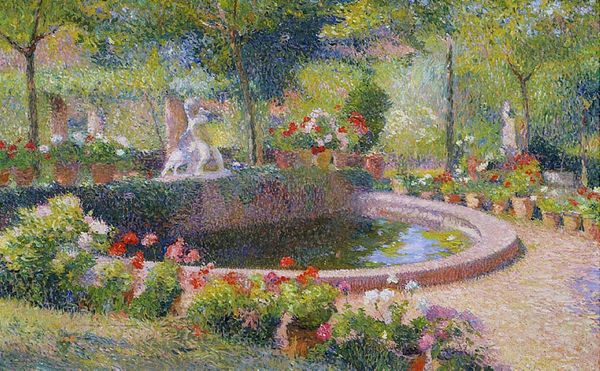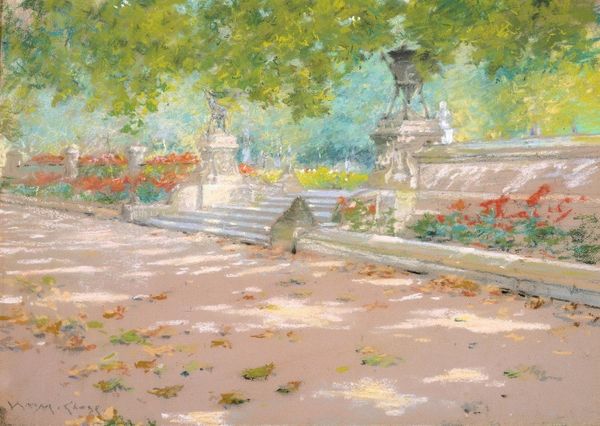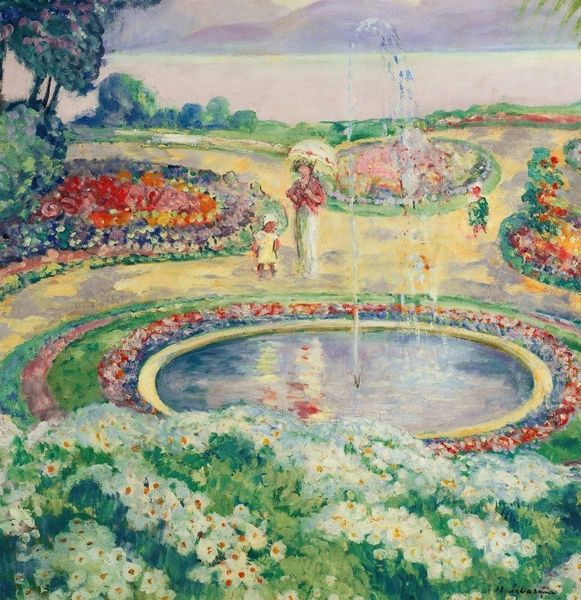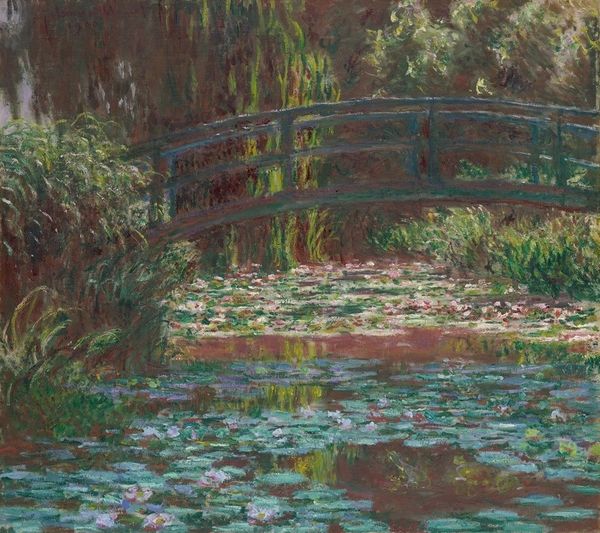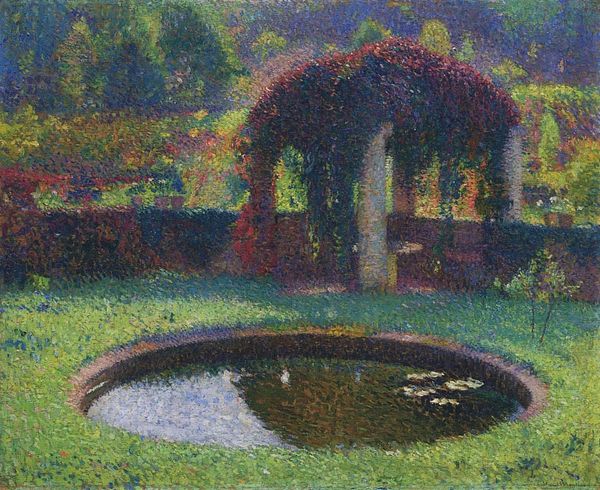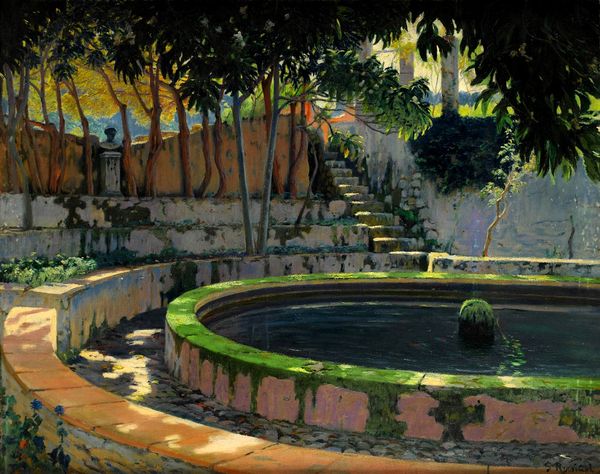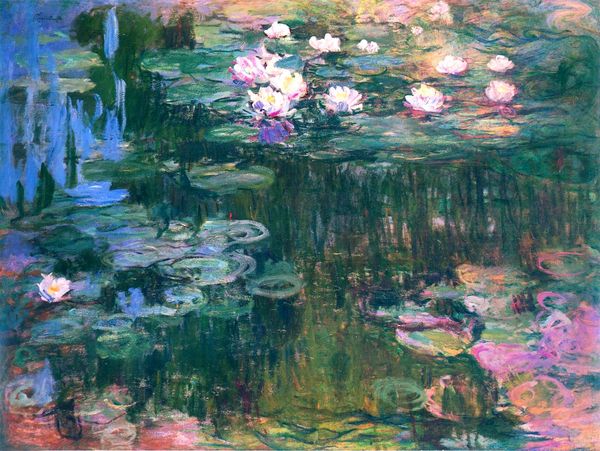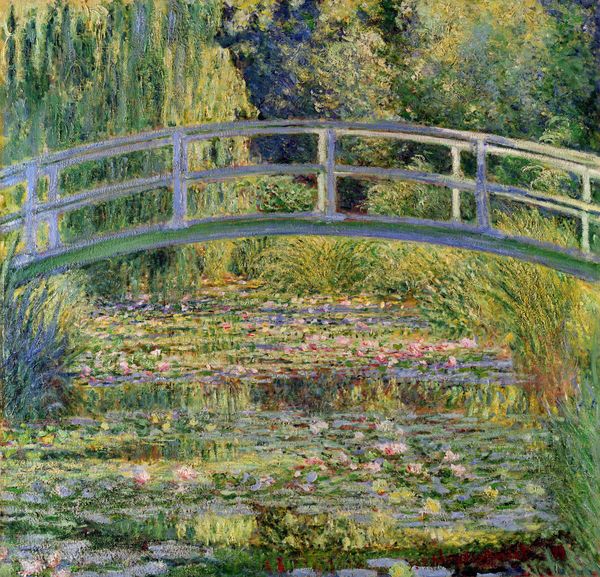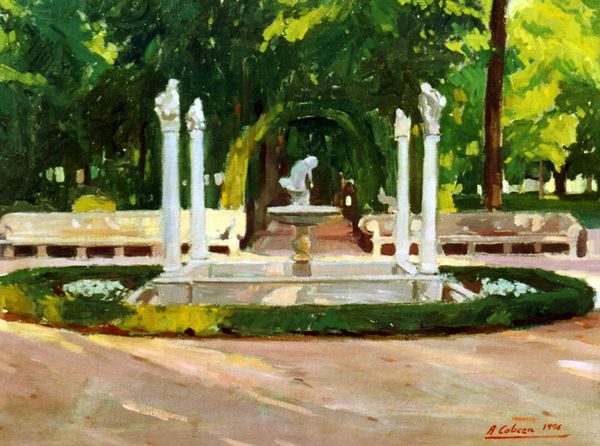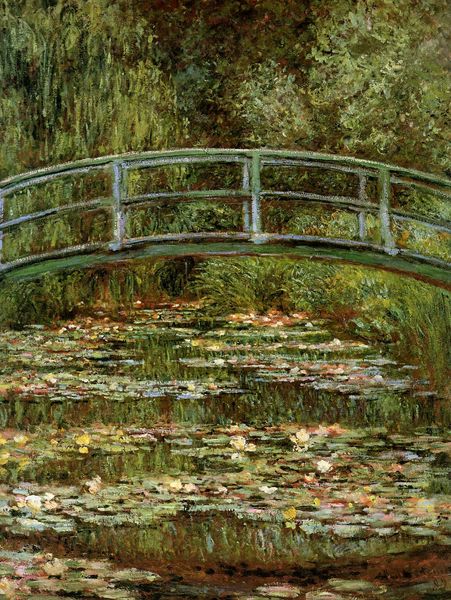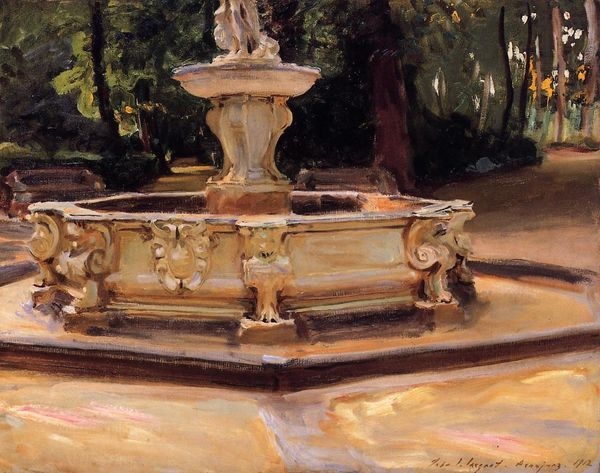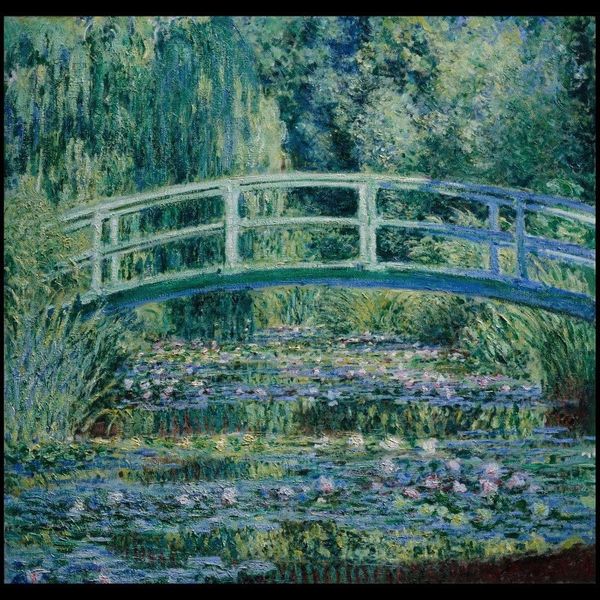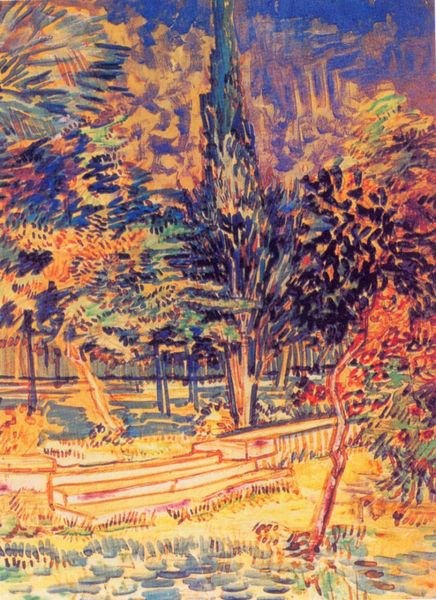
Copyright: Public domain
Curator: Theo van Rysselberghe created "Fountain at San Souci" in 1903 using oil paint, a stunning example of Neo-Impressionism. What's your initial reaction to this park scene? Editor: My first impression is of shimmering light and tranquility. The pointillist technique really captures the feeling of a sun-drenched afternoon. There’s almost a vibrational energy to the piece with how the water disperses. Curator: Absolutely. Pointillism as a movement was trying to represent the individual perception of light, and here, van Rysselberghe beautifully portrays the cultural understanding of leisure and spectacle, a new social vision. How does the subject fit into that cultural framework? Editor: Well, parks like San Souci were increasingly important as spaces of social interaction. But, looking at this work through the lens of class, we have to consider who had access to such refined environments and who benefitted from their aesthetic appeal. Curator: That's a great point. These planned, ornate environments catered to the bourgeoisie, solidifying their power through displays of opulence and manufactured nature. I would push on your assessment though and say that van Rysselberghe isn’t promoting it but investigating. Editor: I see your argument there; what supports this pushback for you? The composition, for instance, is really dynamic, not static at all. You can feel the vitality and movement—this fountain in action. What does this painting mean, given that understanding? Curator: He certainly disrupts that classical harmony. Given the date, one might ask if it's perhaps a subtle questioning of inherited systems on the cusp of the twentieth century. I can't ignore the small rainbow emanating from the water’s crest and falling into the trees. What did that signify during this era? Editor: A poignant question. Maybe it speaks to fleeting moments of hope, potential. In some ways, art always holds that promise, to let the audience think and explore for themselves the social dynamics, political upheavals, gender roles, all embedded within. Curator: It seems both the artist and this artwork prompt us to consider the power dynamics and changing social landscape reflected in the visual arts, prompting both pleasure and deeper analysis. Editor: I agree. It reminds us that art, even when seemingly serene, exists within—and often interrogates—a complex web of history and ideology.
Comments
No comments
Be the first to comment and join the conversation on the ultimate creative platform.
